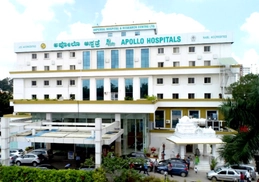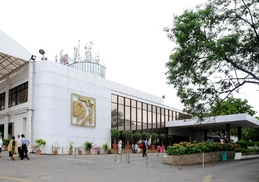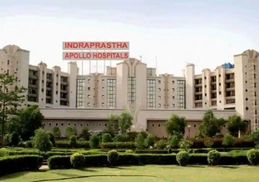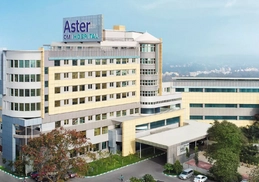
+91 8095511877

+91 8095511877
Lobectomy is a surgery to remove a part of your lung that is diseased. It helps to prevent the spread of the disease to other areas of the lungs.
Your right lung has three lobes, and the left lungs have three lobes. Various diseases that affect your lungs may involve one or all of its lobes.
The most common disease that will need a lobectomy is non-small cell lung cancer. Other conditions of the lungs that only affect a single lobe will also need it to prevent the spread to other areas.
During a lobectomy, the surgeon will remove the lobe of the lungs with a disease. The remaining lobes will help to carry out the functions of the lungs without much problem.
For a lobectomy, your surgeon will open the chest cavity by spreading the ribs. After reaching the lungs, the surgeon will remove the lobe with the disease. The surgery will take around two to three hours. You will be in the hospital for about seven to ten days. Nowadays, Video-Assisted Thoracic Surgery (VATS) is a common form of lobectomy surgeries. In this, there will be 3 to 4 small incisions (1 cm long) that are made instead of a large chest incision. The surgeon also uses a camera and long instruments for this procedure.
You will have a lobectomy if your lung disease does not respond to drugs. The surgery aims to prevent the spread of the disease to more areas of the lungs. You will have a lobectomy for
All these diseases usually start in a small area of your lungs and then spreads to other areas. A lobectomy will help to prevent this spread. It also helps to improve the function of other lobes helping you to breathe more freely.
There are different techniques for doing a lobectomy.
Open surgery- In this, the surgeon will open your chest cavity to do the operation. For this, they will make a long incision in your chest and spread the ribs using a rib spreader. After the procedure, the surgeon will place the ribs back in its position and put sutures to close the incision.
Your recovery from the surgery will be slow and will take about two to three weeks. You will have to take proper care of the wound to prevent any complications.
Video-assisted thoracoscopic surgery(VATS)- In VATS, you will have only two or three small cuts in the chest. The surgeon will insert a camera through one of thee cuts to see the inside of your chest. The surgeon will then insert small surgical instruments through the other cuts to remove the lobe.
Since the cuts are small, it will need only a lesser time to heal. So you will recover faster with a VATS than open surgery. Also, other risks like bleeding, pain, etc. after surgery are less.
Robotic surgery- In this, the surgeon will use robotic arms to do the operation. He or she will control these arms with the help of a console by viewing the chest cavity on a computer screen. Your recovery will be faster with this surgery than others.
The procedure that you will have will depend on your condition and the location of the affected lobe. It will also depend on the preference of the surgeon.
Before the procedure:
Before a lobectomy, your surgeon will explain to you about the procedure in detail. It will help you to know what to expect during and after the operation.
You will have a few tests before it to assess your fitness for the surgery. The recovery from surgery will be a long one and will take a few weeks. You will need somebody at home to help you during this period. You will have to tell your doctor about any medicines that you are taking. If you are taking blood-thinning drugs, you will have to stop it a few days before.
You will be in the hospital a day or two before surgery. On the night before it, you will not have any food. You will have a mild sedative prescribed by the doctor to help you relax and sleep better.
During the procedure
The hospital staff will move you to the operating room in the time fixed for surgery. You will have general anesthesia to make you sleep through the surgery.
If you are having open surgery, you will have a long incision on your chest to reach the lungs. For video-assisted thoracic surgery(VATS), you will have two or three small incisions. The surgery will take about five to six hours. Once it is over, the staff will move you to the observation room and then to the ICU.
After the procedure
After the surgery, the staff will shift you to the ICU. When you wake up, you will find many tubes and leads attached to your body. You may have breathing support for a day or two. The tubes that come out from your chest will help drain any fluid that forms in the surgical site. All these wires and tubes will be there for a few days.
If you are recovering well, you will be back in your hospital room after three or four days. In the room, you will be able to sit up in the bed. You will have to take a few steps every then and now in the hospital room. It helps to improve your blood circulation and also prevents blood clots in the legs.
You will also have to do breathing exercises that help you to breathe more freely. After five to six days, you will have a few tests to know how well your lungs are working. If it is all fine, you will go back home.
Recovery at home
At home, you will have to take rest as much as possible. But you will have to take short walks to improve circulation. You will need to have food that contains lots of nutrients. Both these are essential for your wound to heal faster.
You will have to avoid straining while passing stools. Take laxatives if you have constipation. It may be the side-effect of the narcotic pain killers that you may be having.You need to take care of the surgical wound properly. Keep it clean and dry always. You will have to follow the instructions about how to bath.
You will have to avoid exerting yourself too much for a few weeks. It will take about five to six weeks to be back to your usual self. After that, you can start doing activities as before by consulting your doctor.
A lobectomy has a few risks and complications. Some of the common ones are
Some persons may have pain in the chest after surgery. The pain will be there even after the wounds heal. It happens due to damage to some nerves in the chest during surgery.


This article has been reviewed for medical correctness and relevance by
Dr Manish Hinduja
Dr Manish Hinduja is Consultant Cardiothoracic and Vascular Surgeon at Fortis Hospitals, Mulund and Vashi, Mumbai. He has special interests in minimally invasive cardiac surgery and heart transplant surgery. His skills include total arterial coronary artery bypass surgery, valve repair surgery, valve-sparing aortic root surgeries. He is highly skilled in minimally invasive CABG and minimally invasive valve surgeries. He has various publications in important international journals. He has remained a gold medalist during his training has won the prestigious C S Sadasivam Award" from the national board. "

Apollo Bangalore

Apollo Chennai

Apollo Health City

Apollo Indraprastha

Apollo Mumbai

Aster CMI
Frequently Asked Questions
Why to do a lobectomy of the lung?
What are the diseases that will need a lobectomy of the lung?
What are the risks of a lobectomy?
How will be the recovery from a lobectomy?
What is the cost of lobectomy in India?